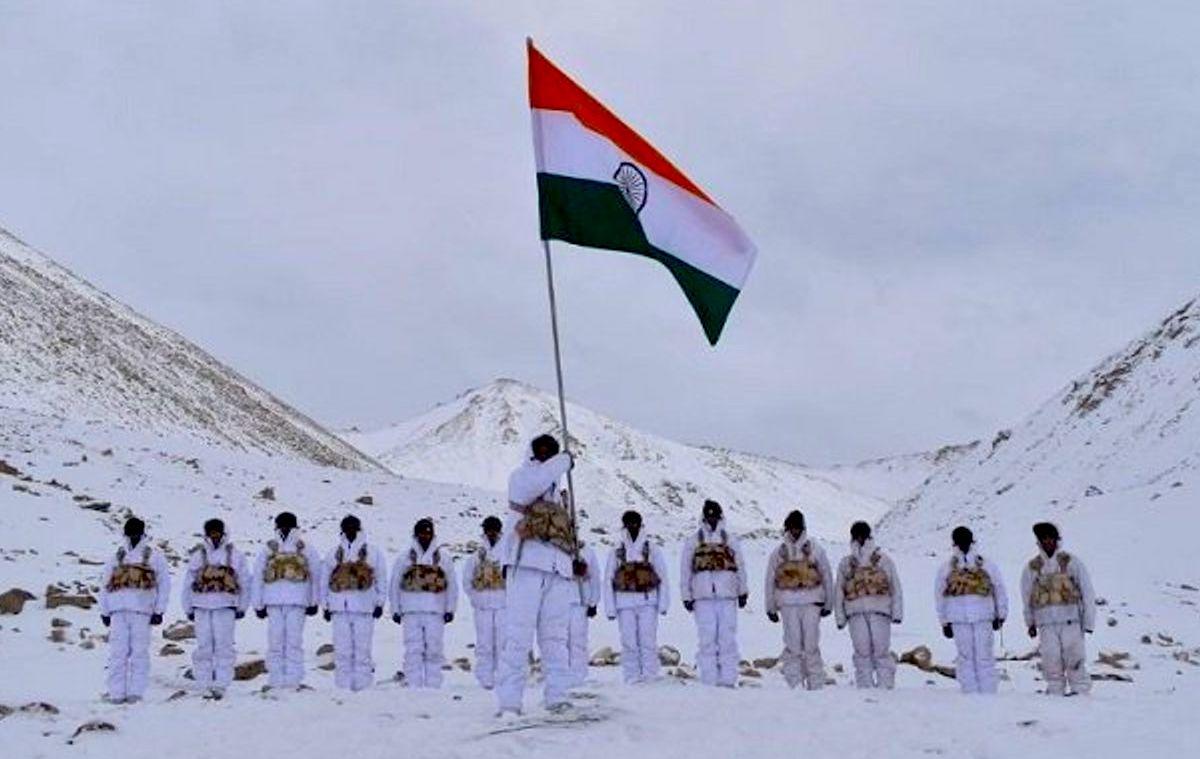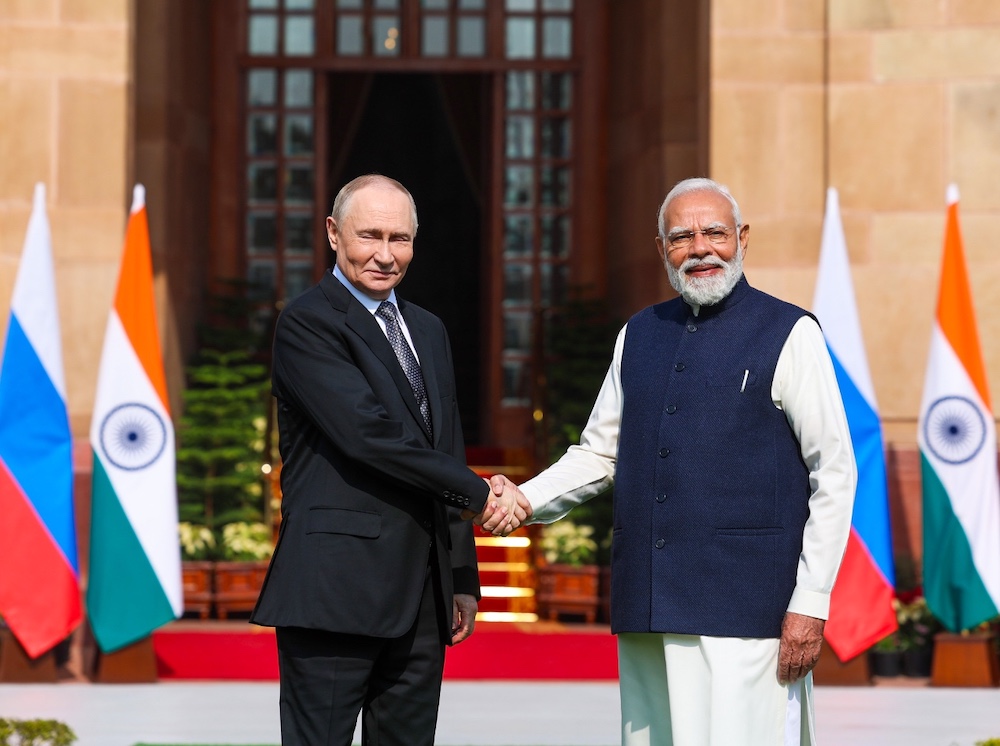
While the 1971 Bangladesh Liberation War between Indian-Mukti Bahini forces and the Pakistani military has always been easy to remember for our resounding victory over our archenemy, the India-China border conflict of 1962 has always been difficult to forget for every Indian. The Bangladesh Liberation War was a revolution and armed conflict triggered by Bengali nationalism and undying fire of self-determination among Bengalis in – what was then – East Pakistan after the Pakistani junta annulled the result of the 1970 general election, which would have seen Sheikh Mujibur Rahman as the country’s first Bengali prime minister – a situation unacceptable to the Punjabi-dominated military-politico leadership of West Pakistan.
The movement also saw the genocide of Bengalis by the West Pakistani-dominated Pakistani military in East Pakistan, which triggered the exodus of tens of millions of Bengalis pouring into India as refugees, prompting the-then prime minister, Indira Gandhi, to take military action against Pakistan. The war culminated with a total victory for Indian and the India-trained Mukti Bahini forces, resulting in the birth of a new country – Bangladesh.
Before the 1971 war started, Pakistan was confident that if a war broke out, their best friend, China, would open another theatre in India’s northern front and put us in a troublesome situation fighting the war in three theatres – west, north, and east. In such a scenario, it would have been difficult for the Indian military to sustain itself. Even the-then national security advisor to the United States president, Henry Kissinger, went to China in disguise and asked the Chinese to open the northern front against India should India go to war against Pakistan.
Kissinger first came to Islamabad from where he was accompanied to Beijing by the top brass of the Pakistan army in a secret mission. However, the mission failed because of the for sight of our military leadership and the support given to us by the erstwhile Soviet Union. The war ended on December 16, 1971, when Pakistani forces in Bangladesh surrendered to Indian and Mukti Bahini forces.
Close parallels can be drawn in the situation prevailing in the subcontinent at this moment. After a hard grind in eastern Ladakh’s Galwan, which saw a deadly mediaeval-type club-and-fist fight between our Army soldiers and troops PLA border guards in June 2020, China continues to build more troops shelters along the frontier as part of its ongoing overall consolidation of military positions and upgrade of air bases facing India. At the same time, Pakistan is appearing to up the ante in the Union territory of Jammu & Kashmir by internationalize India’s move to abrogate the Article 34A of our Constitution through the provisions of the Article 370, which revoked the special status given to the erstwhile state along with attempting to pump more terrorists in the Kashmir valley. It also overtook the control of Afghanistan through its proxy – the Taliban – and its regular troops in disguise.
The strategic vacuum owing to withdrawal of US and Nato/Isaf forces from Afghanistan continues to offer freedom to multiple terrorist groups to revive terrorist activities in the region. The various jihadist groups call upon the global Muslim community to “free” other Muslim land, putting Kashmir on the next list after Afghanistan.
***
India, which is home to one-sixth of the world’s population, seeks peace for prosperity and global rise as an economic power. The uncertain geopolitical environment in the world, threats of transnational terrorism and troubled neighbourhood, unsettled borders, ongoing proxy war in J&K, insurgency in the northeast, left-wing extremism, and the Indian Ocean turning into an arena for strategic rivalry together present multiple challenges in multiple fronts before the country.
India is the seventh-largest country in the world with nearly 18% of the world’s population. It has sizable natural resources, and it is the world’s largest democracy. Today, modern-day India represents the largest democracy in the world with a seamless picture of unity and diversity. Its geostrategic location and regional status as an economic anchor make the country a principal stakeholder in the stability of the region. It is also noteworthy that India has an apolitical and well-trained military, which is the third largest in the world. With all these attributes and a strong record of a responsible and cooperative nation, India is being increasingly looked upon to play a larger role in the region and global affairs.
India’s geostrategic interests
We share land borders with Pakistan, Nepal, China, Bhutan, Bangladesh, and Myanmar. However, officially, it also recognizes a 106 kilometres land border with Afghanistan, as part of its claim of the Kashmir region that is currently under Pakistan’s illegal occupation. The land borders include the icy heights of the Himalayas, arid deserts, mountains, and thick jungles. This wide diversity of terrain along with undefined and unresolved boundary issues are among the many challenges the Indian Army faces in manning such large land borders.
India also has a large coastline of 7,516 kilometres, which gives us a large maritime exclusive economic zone (EEZ) of 2.01 million square kilometres. Our territory also includes around 1,200 far-flung islands that lie off both coasts. On the eastern maritime front, our Andaman and Nicobar Islands in the Bay of Bengal are located strategically at the entrance to the Malacca Straits. On the western maritime front, we have the Lakshadweep and Minicoy islands, which are situated on the sea lanes of communication running eastwards from the Persian Gulf and the Red Sea. While Andamans are 1,300 kilometres away from the nearest point on our east coast, the Lakshadweep chain is 450 kilometres away from our west coast.
Due to India's strategic location in Asia and the Indian Ocean Region, our area of strategic interest is large and extends from the Malacca Straits in the east to the Persian Gulf and the Red Sea in the west, and from Central Asia in the north to the Indian Ocean Region in the south.
With such a geographical expanse, India has an important role in the peace and stability in this region and the world. Though, there is no doubt that the US will continue to be the dominant power in the foreseeable future, it may not be right on our part to remain ignorant about other emerging power centres as well – most importantly China.
***
Eye on China
We are all aware that the current global strategic landscape is marked by a growing polarisation among the major powers – China, Russia, and the US. The primary drivers of this polarization are not ideological, but political and economic in nature. It is rather an inconsistent phenomenon to witness individual major powers asserting national sovereignty by prioritizing their unilateral policies over commitment to international cooperation. One result of the great power rivalry has been weakening of the moral framework for fighting global terrorism with geopolitics and national interests becoming the dominant factor.
China, with its economic muscle of $14.7 trillion GDP, is estimated to overtake the US economy by 2027-28. It is the dragon in the room in front of this pack with a head start in a new world where security and safety are of paramount concerns. However, shifting of the US’s “Pivot to Asia” to Indo-Pacific is perhaps preparing the evolving global order to meet the emerging challenges from China. Already, we are seeing the establishment of a trilateral security pact between Australia, United Kingdom, and the US (AUKUS) and the Quadrilateral Security Dialogue (Quad) between US, Australia, India, and Japan – main objective is to ensure a free, open, and inclusive Indo-Pacific region in the face of China’s increasing assertiveness and hegemonic behaviour in the region.
Pakistan problem
Pakistan is a middle power with the sixth-largest standing military in the world. It is also a declared nuclear power and the only nation in the Muslim world to have that status. It is well known that Pakistan is affected by internal instability and radicalization of its society, which is reflected by the high levels of sectarian and terrorist violence in the country.
However, the biggest concern for the region and the world is Pakistan's support to various terrorist groups, many of which are in the United Nations’ proscribed list. Their complicity in supporting the Taliban and Haqqani Network in Afghanistan has resulted in the spread of Islamist radicalization and terrorism in the region, especially Afghanistan. Besides, it has a record of harbouring and sheltering globally wanted terrorists, like senior members of al-Qaida who masterminded terrorist attacks across the globe, including the 9/11 terror attacks in the US. It also hosts, funds, and trains India-specific terrorist groups, like Lashkar-e-Taiba, Jaish-e-Muhammed, Hizbul Mujahideen, etc.
Apart from the abovementioned global security threat arising out of Pakistan’s support to terrorist groups, the other perennial concern is the safety of Pakistan’s nuclear arsenal. Pakistan remains the lynchpin of China’s South Asia strategy. China, having invested $62 billion in the China-Pakistan Economic Corridor (CPEC) as a part of Beijing’s Belt-Road Initiative (BRI) CPEC, leverages Pakistan as a millstone to fix India in the South Asian geopolitical games as well as use the country as its extension to make forays into the Middle East and East Africa.
Afghanistan setback
A landlocked country of geostrategic importance, Afghanistan has fallen to the Pakistan-backed Taliban after the US withdrawal from the landlocked country. Haqqanis from the Haqqani religious seminaries in Pakistan form the military wing of Taliban. As a result of this, India, which has been trying to establish a counterbalance for almost two decades to Pakistan’s nefarious designs against India, has suffered a huge setback.
Today, the country is home to multiple terrorist outfits, including new ones, like the Islamic State (Khorasan) and the East Turkestan Islamic Movement. This is in addition to the already-existing terrorist groups that had been operating from pockets in the country. These groups include al-Qaida, Jaish-e-Muhammed, Lashkar-e-Taiba, etc. The main source of revenue for these terrorist outfits is narcotics. The country being at the centre of the “Golden Crescent” is now estimated to be the largest global producer and supplier of narcotic drugs around the world.
Furthermore, in addition to the presence of many terrorist outfits, the huge cache of small to medium arms and high-tech equipment worth $85 billion left by the US troops, which is now in the hands of the Taliban and other terrorist outfits, compounds the terrorist threat manyfold.
Bangladesh factor
Bangladesh is the second-biggest receiver of Chinese investment after Pakistan in South Asia. The Bangladesh-China-India-Myanmar Economic Corridor (BCIM-EC) project aims to expand the economic cooperation of four countries, which is home to almost three billion people. So far, China has invested in about 27 projects worth $13.6 billion from a pledged investment of $38 billion. India should be mindful of the fact that Islamic ideology continues to resonate in Bangladesh despite the tough stand and action taken by Prime Minister Sheikh Hasina’s government against Islamic radicals in the country.
India must not be complacent of the security threat the country’s radical groups pose, as we have had bitter experiences with Pakistan’s ISI-funded terrorist groups operating out of Bangladesh against India, like the Jamaat-ul-Mujahideen Bangladesh and Harkat-ul-Jihad-al Islami Bangladesh.
Nepal tightrope
India’s influence in Nepal is declining and China’s influence in the Himalayan country is on the rise. Although Beijing’s regional ambitions have encountered resistance in Pakistan, the Maldives, and elsewhere, it is on a roll in Nepal. As India and Nepal share historic and traditional ties, intertwined in its culture and trade, this recent development has presented a complex problem for New Delhi on how to deal with Kathmandu as Beijing seeks to push its strategic depth to right into India’s northern plains.
Apart from the China factor, an al-Qaeda-linked charity group from Turkey has been working with the Nepalese Islamic group called Islamai Sangh Nepal, which is under the scanner of Indian intelligence agencies for allegedly providing sanctuary to terrorists. Here, India finds itself walking on a delicate tightrope.
Bhutan control
China has begun to intervene Bhutan’s development process with an intention to weaken Indian influence on the Himalayan kingdom. Without any diplomatic relations, China has been successful in making inroads into the economic sector of Bhutan. The Doklam stand-off in 2017 having been diffused, India needs to revive the defining spirit behind the India-Bhutan friendship and bring Bhutan to play an integral role in India’s China policy.
Myanmar crossroads
Myanmar is the strategic pivot where India’s and China’s strategic interests intersect. As of 2018, China is involved in developing 126 projects worth $15 billion. China has a 30-year-long vision to invest in Myanmar in the hydropower projects, mining sector, energy pipelines, deep-sea port, industrial and IT parks, and in the country’s agriculture sector. Myanmar has been a target of Islamic since 2012 and is trying to exploit the persecution of the Rohingya Muslims in the Rakhine State and radicalize certain sections of the Rohingya population. While India can’t isolate the current ruling junta in Myanmar for strategic reasons, it must also do whatever it can to see the country’s policies on the Rohingya population change.
Sri Lanka swing
The Chinese-funded Hambantota port in Sri Lanka is located within 10 nautical miles of one of the world’s busiest shipping lanes, and it is ideally directed at the intersection of major maritime trade routes. The strategic value of this port is a “pearl” in China’s “String of Pearls” designed to encircle India and dominate the IOR. Apart from this, China has built an enclave near the Colombo Port and further ventured into the north and eastern regions of Sri Lanka. China has invested more than $15 billion into infrastructural projects in Sri Lanka. The current government of Gotabaya Rajapaksa seems to be more friendly towards China and willing to yield to Beijing more than India would like to see.
Maldives instability
While the Indian Ocean is considered as the key highway for 70% of global oil and gas trade in Oil and 50% of container traffic, the Maldives virtually stands as a toll gate. While the sea lines of communications in the vicinity of the Maldives have broader strategic significance for global maritime trade, these are of vital importance for India as more than 97% of India’s international trade by volume and 75% by value pass through the region. The Maldives is an important partner in India’s role as the net security provider in the Indian Ocean Region. However, we must be mindful of the fact that the Maldives is a fertile ground for recruitment by transnational jihadist groups operating in the country. Scores of Maldivians joined the Islamic State and fought in Syria and Iraq. Although the increasing Chinese influence during the Abdulla Yameen government has been successfully countered temporarily by the new political dispensation with the help from India, it must be extra alert and proactive in dealing with evolving dynamics in the Maldives continuously.
***
India’s internal security challenges
India faces several security challenges from within. The responsibility to maintain law and order for peace lies with agencies ranging from the police to the paramilitary forces, and if needed, the military as well.
Left-wing extremism
The Naxalites, who are also known as Maoists, are armed insurgents who are waging a violent campaign to establish a “people’s government” – loosely based on Mao Zedong’s communist ideology – through a “people’s war”. What started as a modest pro-peasant movement, left-wing extremism has now become the country's biggest internal security threat, as the previous government of Prime Minister Manmohan Singh had described. However, the level of LWE violence and their geographical spread in the country has been shrinking over the past decade. The violence against the number of affected districts identified under the security-related expenditure scheme came down to 70 in July 2021 from 126 in April 2018. Even the most affected districts declined to 25 in July 2021 from 35 prior to April 2018. While the LWE incidents were down by 23%, the number of deaths had reduced by 21%. Nonetheless, the cycle of killings between the security forces and the Maoists continues to this date and remains a major cause for worry for the central government and the state governments where these groups operate.
Insurgency in the northeast
Northeast India is home to more than 50 ethnic insurgent groups. Some of them want complete secession from India while others are fighting for ethnic identities and homelands. There are still other groups which are running the insurgency as an industry to spin easy money without any political ideology. Militants in their formative years voiced genuine grievances of the people such as poor governance, alienation, lack of development and an apathetic attitude from the central government. However, with time and opportunist motives, these have taken forms of insurgencies across the region. The Centre, in September, signed a fresh ceasefire pact with Niki Sumi-led Khaplang faction of the National Socialist Council of Nagaland (NSCN(K)). The development is being seen as a boost to the ongoing Naga peace process for which the Union Government is holding peace talks with Isak-Muivah faction of the National Socialist Council of Nagaland (NSCN(IM)) and a conglomeration of seven Naga nationalist political groups.
Pakistan-sponsored militancy in J&K and terrorism
For Islamabad, the liberation of Kashmir remains the only objective unachieved since Muhammad Ali Jinnah’s days. The Kashmir valley has been under the shadow of militancy since 1989. Pakistan’s aim since 1997-98 is clearly to destabilize India by all possible means. A protracted “proxy war” and sustained political and diplomatic offensives, are part of a well-crafted strategy to keep India engaged in internal squabbles and impose a heavy burden on the Indian economy. The level of militancy having come down to manageable level and with abrogation of Article 35A through the provisions of Article 370 of the Constitution, and bifurcation of the state into two Union territories – Jammu & Kashmir and Ladakh – the government of Prime Minister Narendra Modi hopes to bring normalcy in the valley and integrate the UT of J&K as any other Indian state.
***
What should India’s security policy be?
A long-term national security strategy for India needs to be charted, which must take a comprehensive approach encompassing domestic, external, economic, ecological, and other challenges. It must highlight the interlinks and feedback loops among them and accordingly formulate a coherent template for multi-disciplinary and multi-sectoral interventions. Such a template would serve as a guide for our security policymakers, which would ensure that intervention in any one domain does not go against or negate intervention in another domain.
Such a national security strategy must be aimed at achieving our short- and long-term national objectives while recognizing the interests of our people. It must examine the current shortfalls in our capability and suggest measures to strengthen the essential elements of national power. A weakness in capabilities will leave us with an inability to convert our vision into reality. As we pursue our strategy, we could be faced with unexpected challenges. However, if the basic tenets are followed, progress is assured.
Briefly, India’s national security objectives could be defined as:
a. Defence of national territory, to include island territories, offshore assets, maritime trade routes, exclusive economic zone, the airspace and cybersecurity.
b. To maintain a secure internal environment against any threat to its unity and development.
c. To strengthen regional stability by cooperation with South Asian Association for Regional Cooperation (Saarc) countries and promote harmonious relations, consistent with the country's National aim and interests.
d. To promote cooperation and mutual understanding, particularly among the countries belonging to the Indian Ocean Region and those in the extended neighbourhood.
***
In the emerging geopolitical landscape, the Indian strategy must be more “complex and nuanced” in a rapidly changing world. The rebalancing of the world accompanied by growing nationalism across vast geographies opens the space for “plurilateralism” and “coalitions of the willing” as well as middle powers like India.
India must keep the following suggests in mind while it formulates a national strategy:
a. Keep the nation united internally. Secularism should not only become a buzz word in theory alone but also become a way of life of every citizen in the country. Frequent and regular “all-party meetings” should be organised under the top leadership of the country. The political leadership must refrain from making irresponsible remarks in public about anything related to national security.
b. India should emerge as a leading economic power. Our economic engagement with the world requires careful deliberation and effective preparation lest we end up eroding our own capacities. It is a complex exercise that deserves serious strategizing.
c. India needs to square up to the challenges of national security by effectively dealing with the emerging security challenges through a “whole government” approach.
d. Pakistan should be engaged through diplomatic, economic, and non-contact warfare, while keeping direct kinetic options as a last resort.
e. Engaging China needs nuanced tactics of war avoidance, minimum deterrence capability, calibrated nuclear policy and competing actions on other fronts.
f. Terrorism and insurgencies must be dealt with all available means, including building counternarratives and employing effective deradicalization programmes.
Disclaimer: The views expressed in the article are the author’s own and don’t necessarily reflect the views of India Sentinels.
© India Sentinels 2021-22










